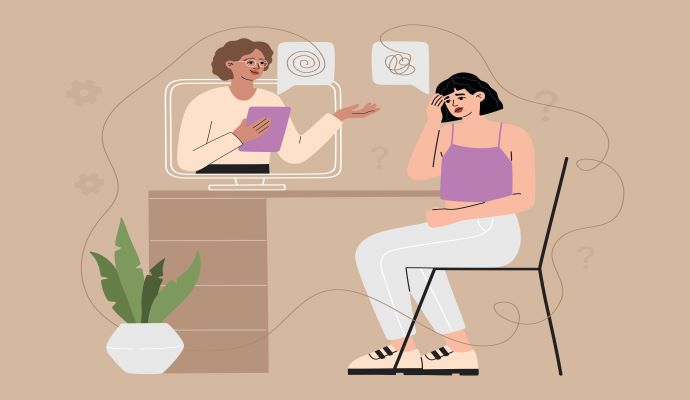Telehealth Reduces Psychotherapy Disruption, Boosting Care Continuity
New research shows that amid an increase in telebehavioral healthcare access, there were fewer instances of 45-plus days passing between psychotherapy visits.

Source: Getty Images
- The shift to telebehavioral healthcare during the COVID-19 pandemic is linked to fewer disruptions in psychotherapy services, indicating telehealth can be effective in supporting the continuity of these services, a new study shows.
Published in Psychiatric Services, a journal of the American Psychiatric Association, the study aimed to assess population-level disruption in psychotherapy before and after the shift to virtual behavioral healthcare following the onset of the COVID-19 pandemic. The National Institute of Mental Health supported the study.
A research team, led by Brian K. Ahmedani, PhD, director of the Center for Health Policy and Health Services Research at Henry Ford Health in Detroit, conducted the study using EHR and insurance claims data from three health systems in the United States.
The study sample included 110,089 patients with mental health conditions. The patients were members of the health systems’ affiliated health plans and attended at least two psychotherapy visits from June 14, 2019, through December 15, 2020. The most frequently diagnosed mental health conditions were anxiety (72.7 percent) and depressive disorders (65.3 percent).
The researchers examined data for 284,826 psychotherapy visits occurring in the nine months before the start of the COVID-19 pandemic on March 14, 2020 (pre-pandemic period), and 270,794 in the nine months after, through December 15, 2020 (pandemic period).
The psychotherapy visits were categorized as in-person or virtual, and service disruption was defined as a gap of more than 45 days between visits.
The study shows that 3.1 percent of all visits recorded during the pre-pandemic period were virtual visits versus 51.8 percent in the pandemic period. Service disruption was more frequent in the pre-pandemic period, with 35.4 percent of all psychotherapy visits followed by a disruption, compared with 17.9 percent of all visits in the pandemic period followed by a disruption.
In addition, researchers found that the median time between visits in the pre-pandemic period was 27 days versus 14 days during the pandemic period.
“Thus, in this large population sample, individuals were more likely to return for additional psychotherapy visits after the widespread shift to virtual care,” researchers stated.
The study also showed that older individuals and those living in rural areas were more likely to have a disruption during the study period as a whole.
However, those identifying as Asian, Hispanic, or another race or ethnicity were less likely to have a disruption between psychotherapy visits. This finding is contrary to prior research as the study did not find disparities in adherence to psychotherapy among patients from minority racial and ethnic groups, the researchers noted.
“Whereas most other studies have focused on access to all psychotherapy visits, the present study focused on disruptions in care after an initial visit,” the researchers wrote. “Prior research demonstrates that initial access may be the biggest barrier to receipt of psychotherapy.”
Further, patients with depressive, anxiety, or bipolar disorders were less likely to have a disruption, while those with schizophrenia, attention-deficit/hyperactivity disorder (ADHD), autism, conduct or disruptive disorders, dementia, or personality disorders were more likely to have a disruption.
These findings add to research examining the impact of virtual mental healthcare during the COVID-19 pandemic.
For instance, a study published in March revealed that the shift to telehealth in 2020 did not negatively impact patient engagement in healthcare among individuals with major depression.
The researchers conducted a retrospective cohort study that included EHR data from three integrated healthcare systems. They used inverse probability of treatment weighting to adjust for covariates across three time periods: pre-pandemic (January 2019 to March 2020), peak-pandemic shift to virtual care (April 2020 to June 2020), and the recovery of healthcare operations (July 2020 to June 2021).
They found that in two of the three healthcare systems, antidepressant medication orders declined during the peak pandemic period. However, during the recovery period, orders returned to pre-pandemic levels. Further, completion rates of symptom screenings increased in all three health systems throughout the peak pandemic period and continued during the recovery period.
